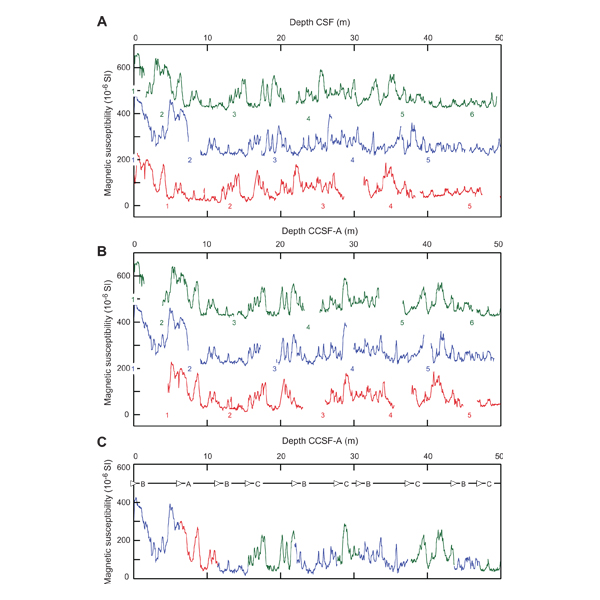
Figure 2.
The tops and bottoms of cores are usually disturbed and there are often coring gaps between cores. To remedy this and create a complete stratigraphic sequence, a “composite” ideal core is created by splicing together data from different holes to so that coring gaps in one hole are filled with core intervals from an adjacent hole, trying not to use the tops and bottoms of cores. To generate a composite core depth below seafloor (CCSF-A) at least two or more holes are drilled at each site and each hole is slightly offset by depth from the other (Fig. S3 [see text footnote 1]). Hole core measurements, such as magnetic susceptibility and natural gamma ray, and/or split core images and lithologic changes from the different holes are aligned using distinguishing features, such as a sharp peak or a color change. (See Figs. S3–S5 for additional examples.) (A) Example from Site U1333, central Pacific, showing construction of a CCSF-A. In this example, magnetic susceptibility measurements from different holes are aligned by depth; Hole U1333A (red), Hole U1333B (blue), Hole U1333C (green). Numbers indicate the order of cores taken in the hole. (B) Depth-shifted cores on composite depth scale (CCSF-A [m]) aligning distinguishing features. (C) The magnetic susceptibility records the different holes that are part of the splice are shown by the hole color along the bottom. Along the top, core breaks (triangles) and hole designations are shown (from Pälike et al., 2010).